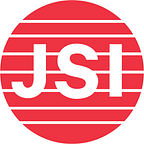Madagascar, the fourth largest island in the world, is also one of the world’s poorest countries. 64 percent of the population lives in rural areas with difficult access to most services. The extremely limited availability of health services has led to high rates of infant, child, and maternal mortality. In addition, Only 52 percent of the current population has access to safe drinking water and only 12 percent has improved sanitation facilities.
Community Health Volunteers: Agents of Change
Community Health Volunteers (CHVs) are critical for keeping Madagascar’s most vulnerable and rural residents healthy. Working in their home communities, CHVs provide a package of services, including counseling, referrals, treatment, and demand generation in the following areas: maternal, newborn, and child health; family planning/reproductive health; water, hygiene, and sanitation; prevention and treatment of malaria; and nutrition. As valued members of their societies, they act as effective agents of change who promote sound health practices and provide basic health services to their friends and neighbors.
Helena, a Community Health Worker from Bemanonga
Thirty-five year old Helena is among the more than 10,000 CHVs who receive training and support from the USAID Community Capacity for Health Program, or Mahefa Miaraka. The five-year health program is providing basic, quality health care to isolated populations in seven remote regions in north and west Madagascar. The program’s overarching goal is to increase the use of proven, community-based interventions and essential health products among underserved populations of Madagascar.
Helena lives with her husband and two young children in the commune of Bemanonga, a region of northwestern Madagascar where health services are extremely limited.
An active church-goer, Helena gets an early start to her Sunday — rising at 6:00 a.m. — in order to have enough time to get herself, her daughter, and her niece ready for church.
Through her work as a CHV, Helena is well known and respected in her commune. She takes great pride in her duties. “My role as a CHV has taught me how to raise awareness for positive health behaviors. I am very proud to be of service to my community in this way.”
Helena’s faith is an important aspect of her life as it is for many people in Madagascar. For Helena, her faith fuels her desire to improve the lives of those in her community through her work with Mahefa Miaraka.
After church, Helena waters the plants outside of her health hut alongside her CHV colleague Roselle. Her health hut was constructed by the commune members as a sign of their commitment to and appreciation for the services she provides.
Helena At Work
Helena’s first client of the day is Joseph, a young child who is suffering from diarrhea. The training Helena received from the Mahefa Miaraka program has equipped her with the skills to treat diarrhea. In addition she counsels Joseph’s mother on prevention measures such as the promotion of breastfeeding, vitamin A supplementation, and methods of improving water, sanitation, and hygiene practices.
“Over time, I have received positive feedback for my work and have seen concrete health improvements in my community. More people are building their latrines and tippy taps after awareness building exercises, and moms are automatically bringing their children to my health hut when they fall sick.”
Although Helena has seen great improvement in her community’s health in recent years, progress hasn’t come without its challenges.
“Getting people to use latrines instead of defecating openly has been one of the greatest challenges of my work,” she says. “At the start, people were very resistant to considering using latrines. This behavior posed serious health risks, especially during the rainy season. Roselle and I worked through these barriers using behavior change communication approaches with support from the chief of the fokontany. This proved very effective.”
Helena is also committed to providing members of her community with the appropriate knowledge and resources to make healthy decisions about sex.
She pays particular attention to making sure that men are aware of the importance of family planning. “Sometimes, this can be a challenge as well,” she admits.
Below, Helena sits with her second client of the day. This particular client was referred to Helena by a regular family planning user who used a family planning invitation card, which was developed by MAHEFA, the predecessor program to Mahefa Miaraka. The family planning invitation card is a way for a satisfied family planning user to encourage a friend or peer who isn’t using any method to seek information and services from their CHV and try a method for his or herself.
After a busy Sunday, Helena returns home and relaxes while watching her favorite TV series. Later, she’ll prepare dinner for her family, clean, put her children to bed, and sleep. She will wake up the next morning, ready to continue serving her community and her country by promoting positive health behaviors and providing essential health services.
With the help of CHVs like Helena, 4,887 of the most underserved and isolated villages (fokontany) across seven regions now have access to basic health services that were nonexistent or difficult to access before the program began.
JSI’s USAID-funded Mahefa Miaraka Program is committed to improving the quality of health services in Madagascar. CHVs like Helena play a critical role in supporting the provision of basic health care. By building the capacity of CHVs, Mahefa Miaraka is creating a sustainable network of health care providers who encourage community members to seek quality healthcare, thereby increasing the demand for services and promoting healthy behavior changes.
*All photos by Robin Hammond.
